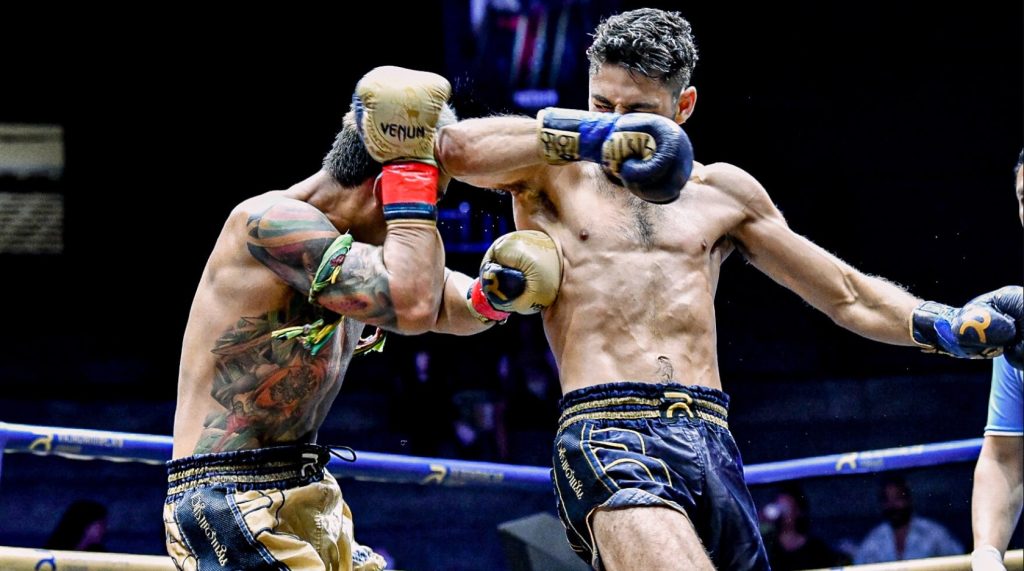Boxing: Combat sports have fascinated fans for decades, with debates often flaring over which discipline reigns supreme in a head-to-head matchup. Two of the most iconic striking arts are Muay Thai, known as the “Art of Eight Limbs,” and Boxing, the “Sweet Science.” Each sport offers unique strengths and techniques that make it formidable in its own right. But when comparing them, who would win?
Table of Contents
To answer this question, we’ll dive into the origins, techniques, rules, conditioning, and fight strategies of both, and evaluate how they stack up in various combat scenarios.
Origins and Philosophy
| Aspect | Muay Thai | Boxing |
|---|---|---|
| Origin | Thailand | England |
| Historical Use | Military combat and sport | Sport and entertainment |
| Philosophy | Utilizes full body as a weapon | Precision, timing, and footwork |
| Primary Focus | All-around striking | Punching |
Muay Thai originated in Thailand centuries ago, evolving from battlefield techniques. It is a complete striking art using punches, kicks, elbows, and knees. In contrast, boxing is a Western sport focused exclusively on punches, refined with unmatched footwork and head movement.
Techniques and Weaponry
| Technique Type | Muay Thai | Boxing |
|---|---|---|
| Punches | Yes (similar to boxing but less varied) | Yes (core focus: jabs, crosses, hooks, uppercuts) |
| Kicks | Yes (roundhouse, teeps, low kicks) | No |
| Elbows | Yes (short-range, cutting strikes) | No |
| Knees | Yes (especially in clinch) | No |
| Clinch | Extensive and aggressive | Minimal (only used to tie up) |
| Footwork | Basic, forward-heavy stance | Advanced, lateral and evasive |
| Head Movement | Minimal | Essential to defense |
Muay Thai practitioners have more offensive tools, but boxers excel in precision and movement. Boxers can land fast, powerful combinations and dodge strikes efficiently. However, Muay Thai fighters can punish with low kicks, knees, and elbows.
Conditioning and Toughness
| Attribute | Muay Thai | Boxing |
|---|---|---|
| Conditioning | Very high – conditioned shins, body | Extremely high – cardio and abs |
| Toughness | Emphasized due to clinch and elbows | Emphasized due to high-volume punches |
| Sparring Style | Often light, technical sparring | Varies (technical and hard sparring) |
| Fight Frequency | Fighters can have 100+ pro fights | Fewer fights, but higher financial stakes |
Both sports demand grueling conditioning. Muay Thai fighters toughen their shins and core through daily drills. Boxers focus on head movement, speed, and punch resistance. Each discipline breeds toughness in its own way.
Rules and Restrictions
| Ruleset Feature | Muay Thai | Boxing |
|---|---|---|
| Legal Strikes | Punches, kicks, elbows, knees | Punches only |
| Scoring Criteria | Effective aggression, damage, control | Clean punches landed, defense, ring generalship |
| Rounds | 5 rounds (3 minutes each) | 4–12 rounds (3 minutes each) |
| Protective Gear | 8–10 oz gloves, no headgear in pro | 8–10 oz gloves, sometimes headgear |
The broader scope of Muay Thai techniques provides more ways to score and finish a fight. Boxing, however, offers longer fights with deeper focus on technical superiority over time.
Head-to-Head: Who Has the Edge?
Let’s examine different scenarios to determine which style would likely prevail:
1. In a Muay Thai Ring
- Advantage: Muay Thai Fighter
Boxers untrained in defending kicks, elbows, or clinch knees would be overwhelmed. A Muay Thai fighter could use low kicks to immobilize the boxer, and elbows in close quarters could end the fight quickly.
2. In a Boxing Ring (under Boxing Rules)
3. In an MMA or No-Rules Fight
- Advantage: Likely Muay Thai
Muay Thai’s versatility gives it an advantage. Fighters trained in clinch control and all limbs can adapt to unpredictable situations. Still, a boxer with cross-training can be dangerous, especially with knockout power.
Notable Crossovers
Some athletes have tested themselves in both arenas:
- Samart Payakaroon: Muay Thai legend and successful boxer; won the WBC super bantamweight title.
- Buakaw Banchamek: Dominated international kickboxing with Muay Thai roots.
- Vasiliy Lomachenko: Boxing phenom with unreal footwork—hypothetically tough for any Muay Thai striker in boxing-only rules.
These crossovers show that cross-training and adaptation play a vital role in real-world matchups.
Modern-Day Relevance
| Context | Muay Thai | Boxing |
|---|---|---|
| MMA Effectiveness | Highly effective (especially clinch/kicks) | Limited unless cross-trained |
| Olympic Recognition | Not yet fully included | Yes |
| Global Popularity | Growing rapidly | Long-established |
| Pro Leagues | ONE Championship, Lumpinee Stadium | WBC, WBA, IBF, WBO |
Muay Thai fighters have shown their value in MMA organizations like UFC and ONE Championship, especially with low kicks and clinch knees. Boxing remains dominant in the global sports scene, with higher paydays and broader media coverage.
Who Would Win?
The answer depends on context.
- Under Muay Thai rules, a skilled Nak Muay will dominate.
- Under boxing rules, a boxer will outclass the Muay Thai fighter.
- In a street fight or mixed-rules setting, Muay Thai’s diverse arsenal offers more practical tools.
However, if we measure completeness of combat skill, Muay Thai is arguably the more versatile and adaptable art. But boxing’s technical mastery and athleticism cannot be overlooked.
Final Verdict Table
| Situation | Likely Winner |
|---|---|
| Muay Thai Rules Match | Muay Thai Fighter |
| Boxing Rules Match | Boxer |
| MMA Rules Match | Muay Thai Fighter |
| Street Fight | Muay Thai Fighter |
| Pure Punching Contest | Boxer |
Ultimately, styles make fights—but preparation and adaptability often determine who wins.


